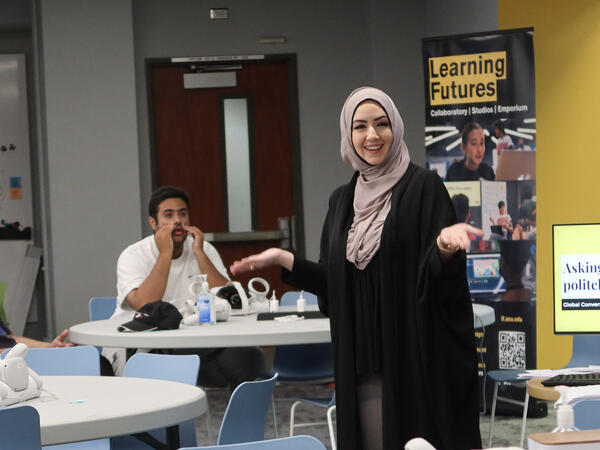
4 ways Trauma Informed Instruction supports international college students
Global Launch instructors use Trauma Informed Education practices in the classroom to help students succeed
Learning English in a foreign country can be challenging for international college students. With the added stress of trauma, an increasing number of students would benefit greatly from the Trauma Informed Instruction adopted by Global Launch educators. I'm Erin Tamayo, a Global Educator and Program Coordinator for ASU Global Launch. I have worked extensively with individuals who have experienced trauma at different times in their lives and I have helped train our Global Educators and others at ASU in Trauma Informed Education strategies.
The ASU Global Launch vision states: “We aim to expand ASU’s global impact and enhance learners’ success through innovative academic and skills development programs, reaching any learner, anywhere.” Part of fulfilling the diverse needs of “any learner anywhere” includes training instructors in Trauma Informed Instruction so they can recognize the signs of trauma in their classrooms and build supportive practices to help guide and bolster these students toward resiliency and success.
As research increasingly demonstrates, the number of students in our classrooms who have experienced at least one potentially traumatic event (PTE) or Adverse Childhood Event (ACE) in their lifetime is actually quite high, further highlighting the need to adapt our programming and practices to effectively support our students.
Global Launch’s strategic approach to Trauma Based Instruction
Some of the Trauma Informed Instructional strategies that Global Launch teachers use in their classrooms include:
Helping students to regain control.
Students who have experienced trauma often tend to benefit greatly from a regained sense of control over their lives and surroundings. In the classroom, having a predictable class routine, schedule, or unit/lesson format can be instrumental in helping establish a sense of control and certainty, especially when things may have felt uncontrollable for some time during a traumatic period.
Building trust.
Another strategy that often helps students who have experienced trauma is for their instructor to be reliable and trustworthy. In experiencing trauma, individuals often are met with unreliable, untrustworthy, and often harmful and abusive individuals that instill a sense of distrust of authority figures or others in general. Being reliable with what you say and do may help build trust not only in you as their instructor, but it may also help them develop a renewed sense of trust in humanity.

Offering multiple learning opportunities.
Other strategies that have been shown to help with the cognitive effects of trauma include providing for multiple learning opportunities of class content. If a student comes to class one day and is processing their experiences, they may not be in the mindset to gain or retain the information being taught. It will be helpful to post copies of presentations, lectures or other learning materials on your Learning Management System (such as Canvas) for students to review again and again, at a later time. Also, making yourself available for regular office hours outside of class can help students follow up if they have questions.
Not lowering expectations.
One particular temptation that instructors recognized in working with students who may have suffered trauma or adverse experiences is the temptation to lower expectations of these students. Often, instructors think that holding lower expectations helps students to be able to achieve in light of the difficulties that they have experienced. However, this indeed is the opposite case.
I was able to attend a panel discussion with some students who recently escaped traumatic experiences. I asked them: “What is one thing that you would like your instructors to know about you?” The message came back loud and clear from a student named Mina: “Do not underestimate our abilities.” Students who have suffered from trauma need to know that as instructors, as educators, we believe in them; we believe in their ability to succeed. This helps them to also believe in themselves.

A final key to mention in regards to Trauma Informed Instruction is that although students who have suffered from trauma are often viewed through a deficit-based lens, strengths-based Trauma Informed Instruction helps us to see there are a lot of strengths these students bring to the table. As teachers, it is our job to help them take inventory of these strengths, build upon them in the classroom and utilize the assets they have to build toward resilience both in the classroom and beyond.




